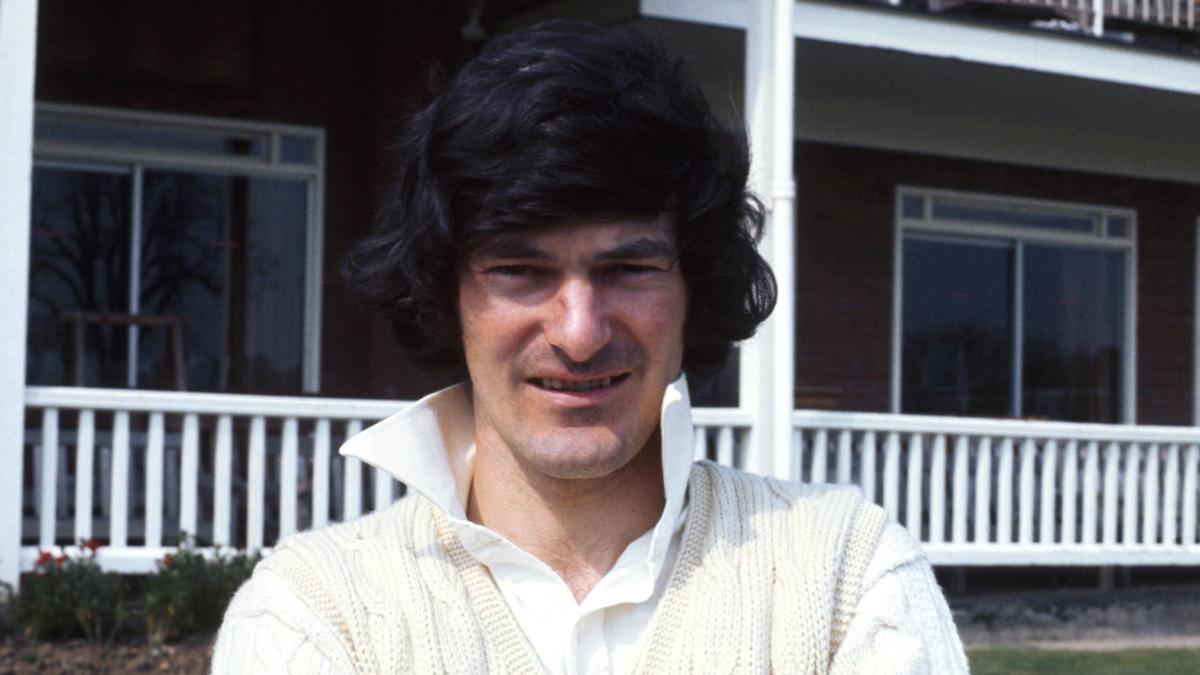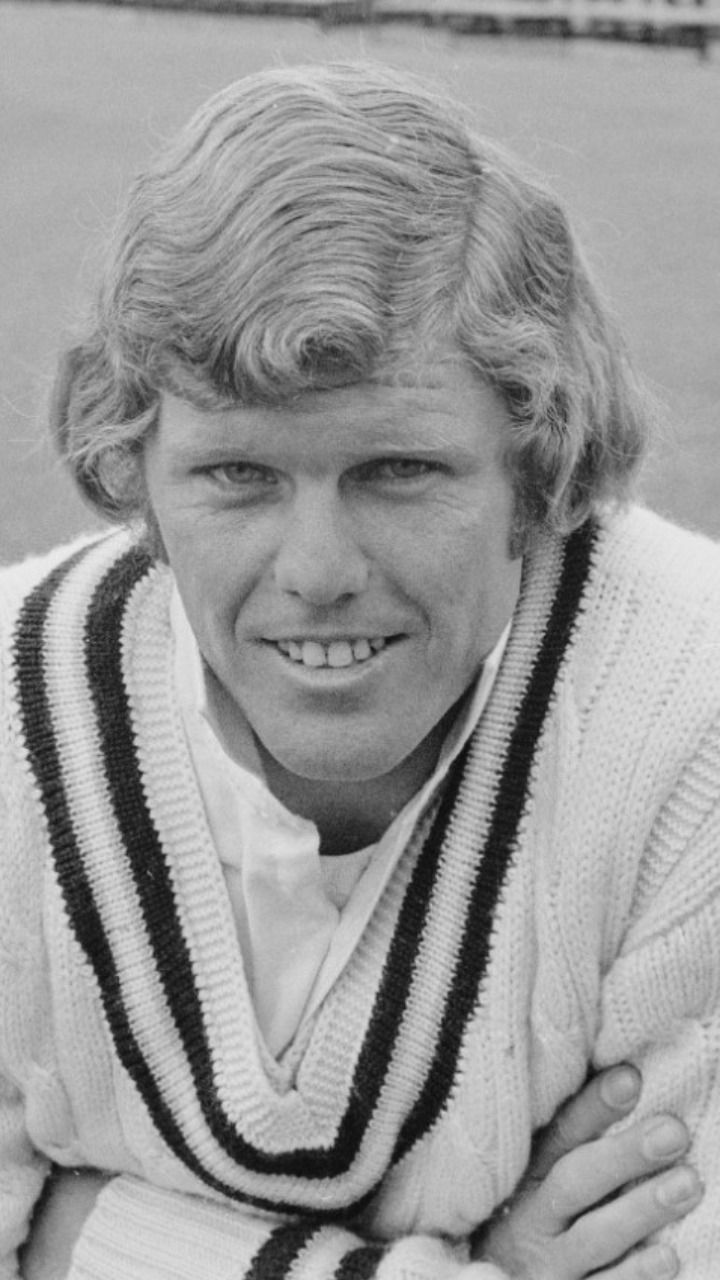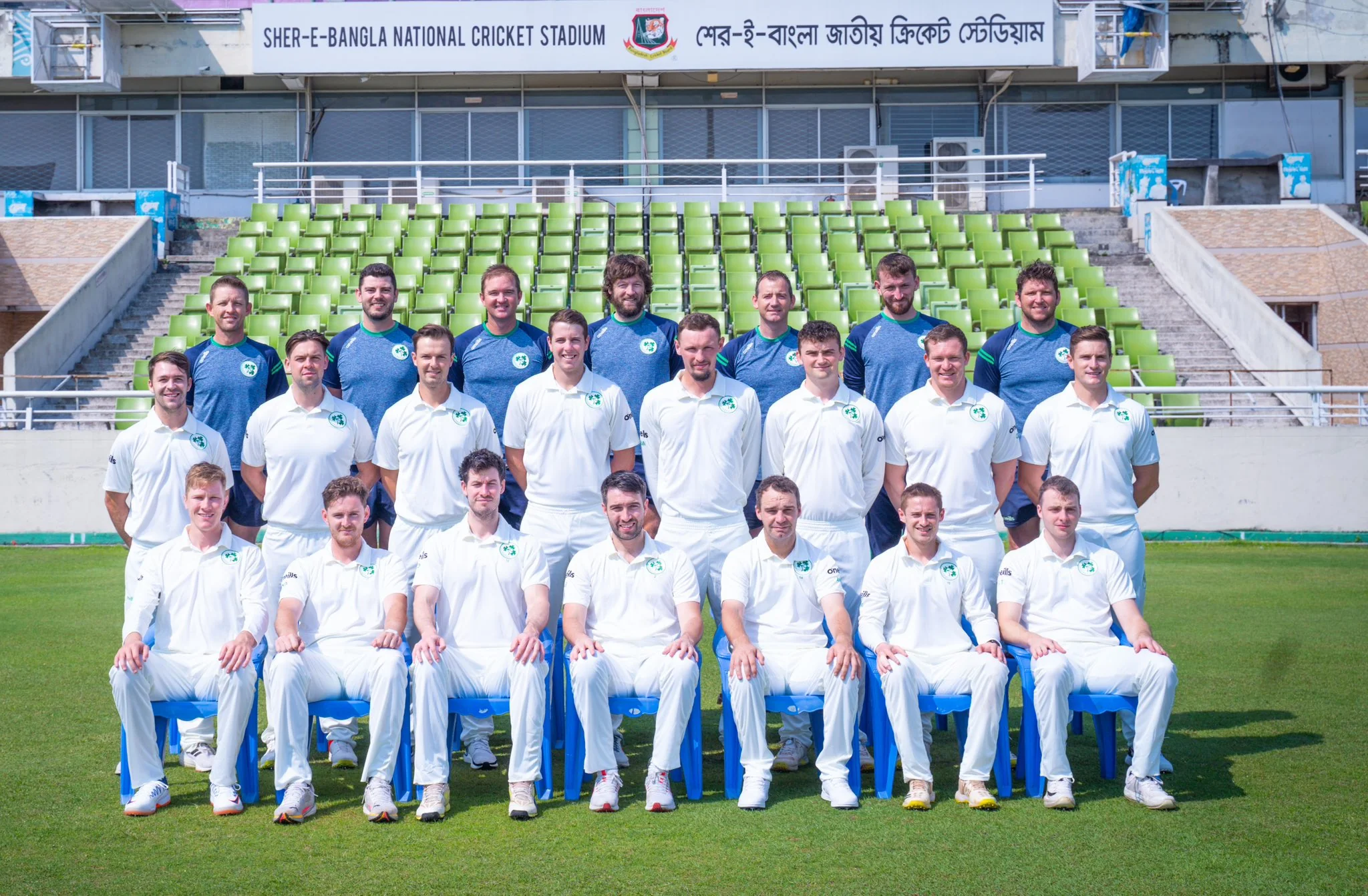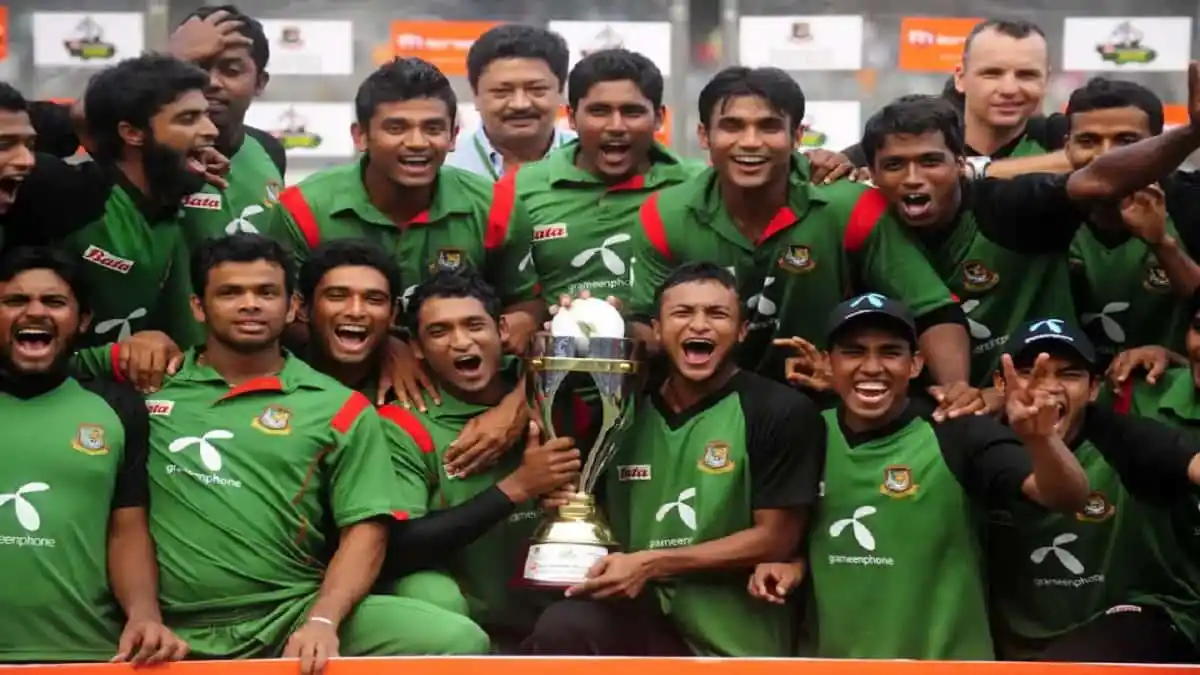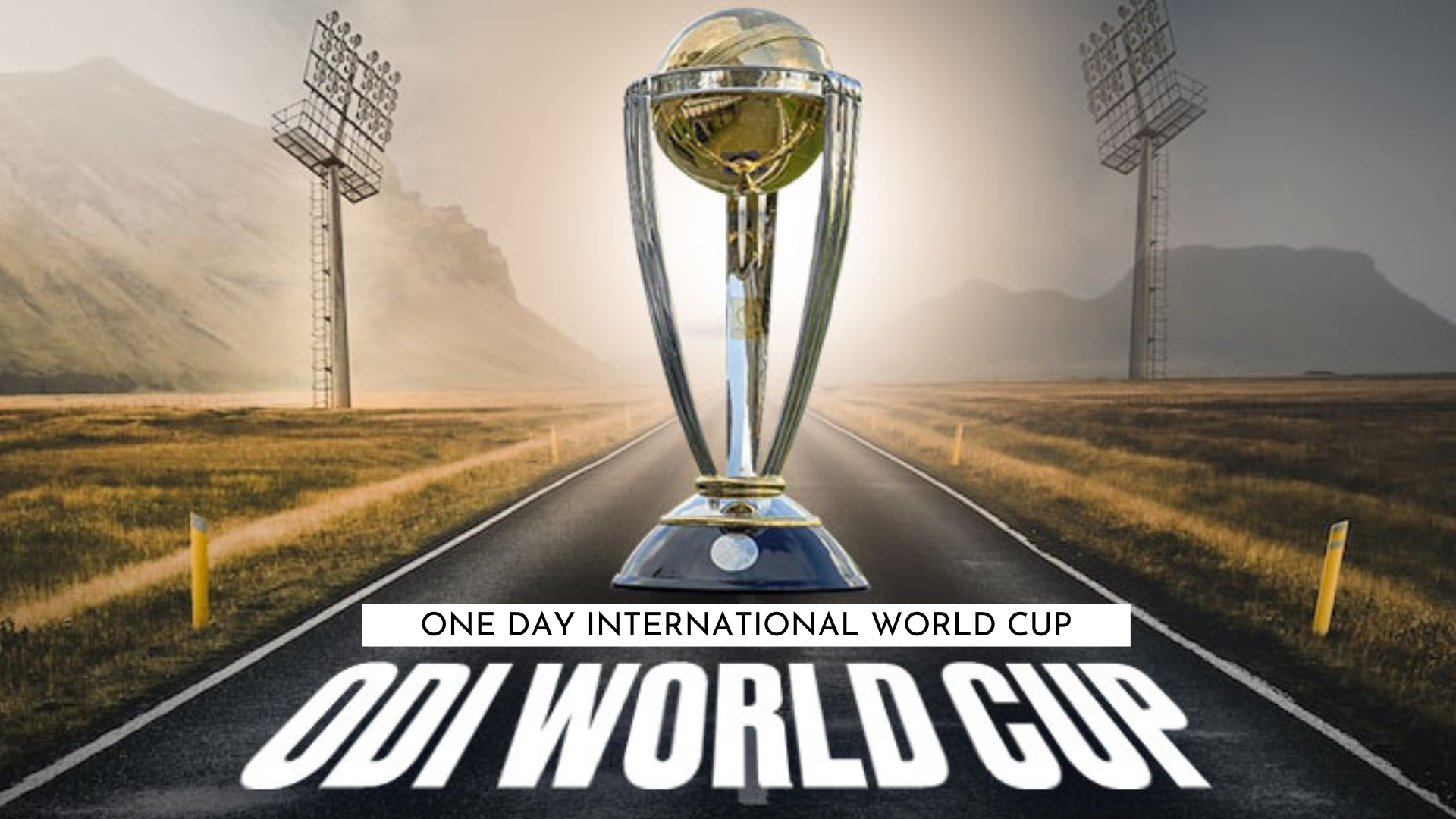Curtly Ambrose, a legend whose name resonates beyond the boundaries of a cricket pitch, has left an indelible mark on the sport.
From his humble beginnings in Antigua to becoming a fearsome fast bowler for the West Indies and eventually stepping into a coaching role, Ambrose’s journey is a testament to resilience, skill, and passion for cricket.
This narrative not only celebrates his remarkable career but also explores his transition into coaching, shedding light on his continuing impact on the game.
Key Takeaways
- Early Passion: Despite his father being a carpenter, Ambrose found his calling in cricket, influenced by his mother's enthusiasm for the game.
- Athletic Transition: Initially a basketball player, Ambrose switched to cricket, propelled by a late growth spurt.
- Academic Foundations: Before cricket, Ambrose focused on academics, excelling in mathematics and French.
- Rising Star: His cricket journey began in earnest at 20, quickly leading to national recognition.
- International Debut: Ambrose made a memorable debut for the West Indies in 1988, filling the void left by Joel Garner.
- Dominant Performer: Across his career, Ambrose was known for his lethal bowling, particularly his ability to trouble batsmen with pace and height.
- Memorable Matches: His performances, such as the 8 for 45 against England, cemented his status as a cricketing legend.
- Challenges Overcome: Despite injuries and form dips, Ambrose consistently bounced back, showcasing his resilience.
- Coaching Career: Post-retirement, Ambrose continued his cricketing journey as a coach, sharing his expertise with the Jamaica Tallawahs.
- Legacy and Honors: Ambrose's contributions to cricket have been recognized through numerous awards and accolades, including a knighthood for his services to the sport.
The Rise of Curtly Ambrose: From Carpenter’s Apprentice to Cricket Legend
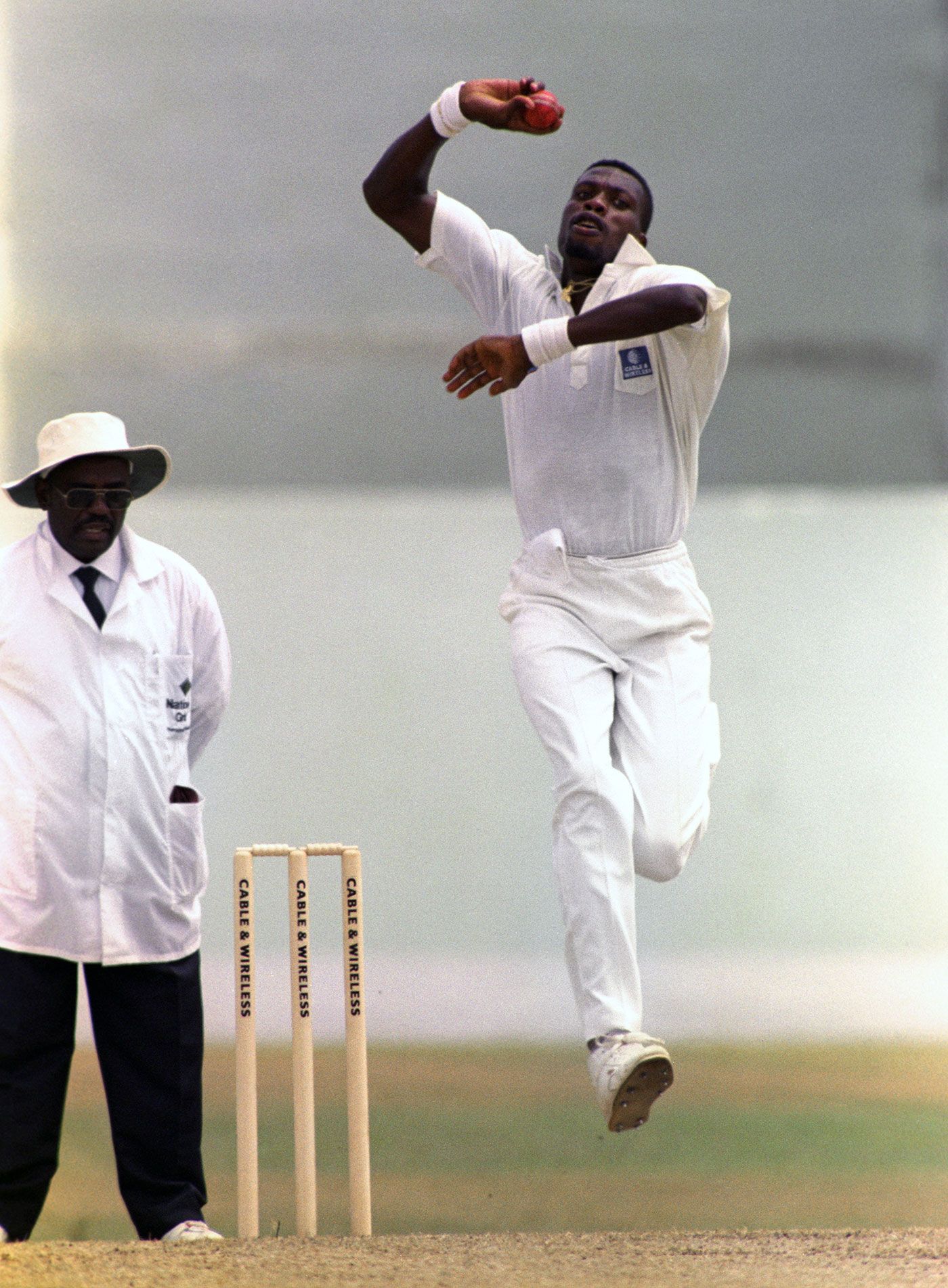
Born in Swetes, Antigua, on September 21, 1963, Curtly Ambrose was the fourth child among seven siblings. His father, a village carpenter, didn’t have cricket in his blood.
However, Ambrose’s mother, a cricket enthusiast, sowed the seeds of passion in him. Despite focusing on basketball, Ambrose also dabbled in cricket, showcasing his prowess initially as a batsman.
Excelling in academics, particularly mathematics and French, he embarked on a carpentry apprenticeship after turning 17.
America beckoned, but cricket called louder, especially when he shot up to 6 feet 7 inches in his late teens.
Encouraged by his mother, Ambrose started taking cricket seriously, a decision that would soon change his life.
A Star in the Making
A softball cricket match revealed Ambrose’s potential as a fast bowler, pushing him to explore club cricket at 20.
His towering presence and lethal bowling quickly caught the attention of coaches, propelling him into the St John’s cricket team.
A remarkable performance against St Kitts for Antigua in the Leeward Islands competition highlighted his skill. Despite a shaky start in his first-class debut in 1985-86, Ambrose didn’t let initial setbacks deter him.
His journey continued across the Atlantic, where scholarships allowed him to hone his craft in England, significantly improving his bowling technique.
Triumph and Recognition
Upon returning to Antigua, Ambrose’s relentless practice paid off. He reclaimed his spot in the Leeward Islands team and emerged as the main attack force.
Although an initial match saw him no-balled for throwing, his unique wrist flick, which added pace, was eventually understood and accepted.
His performance skyrocketed, with 35 wickets in five matches, including a memorable 12-wicket haul against Guyana. Ambrose’s yorker became feared, his pace unyielding, and his thirst for wickets insatiable.
Unknown before the season, he finished as a dominant force in West Indian cricket, paving the way for an illustrious career.
Curtly Ambrose: A Fast-Bowling Phenomenon’s Rise
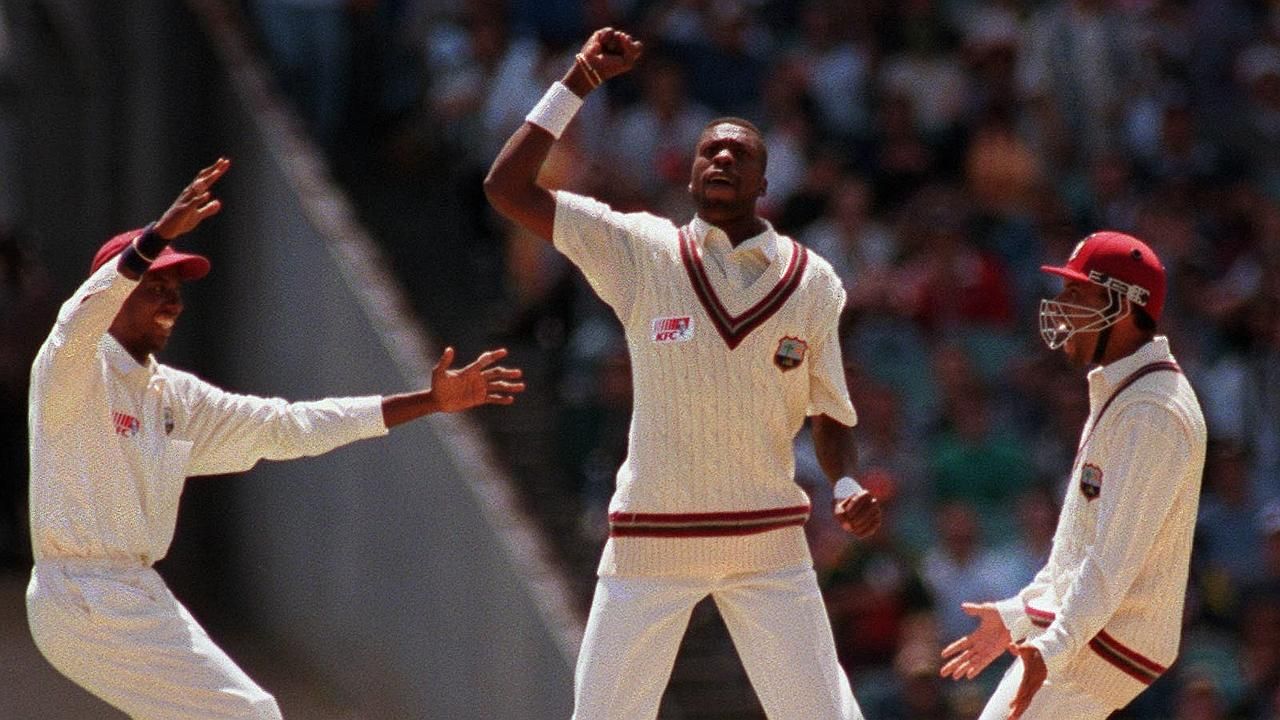
In 1988, Curtly Ambrose burst onto the international scene. With Joel Garner’s retirement, the West Indies found a towering successor. Ambrose debuted in Jamaica, claiming four wickets against Pakistan.
His prowess continued, snagging four and two wickets in subsequent matches, leading the West Indies to a series victory.
However, his Test debut was challenging, yielding only two wickets. Yet, he quickly adapted, finishing the England series with 22 wickets, showcasing his menace with bounce.
Dominance Down Under
Ambrose shined in Sharjah, taking eight wickets and securing a victory against Pakistan. Australia’s tour further highlighted his impact.
His height troubled batsmen, contributing to the West Indies’ 3–1 Test series win. Ambrose’s haul included multiple five-wicket innings, topping the series with 26 wickets.
Despite battling fatigue later in 1989, his early performances cemented his reputation.
County Cricket and Clashes with England
1989 saw Ambrose join Northamptonshire, making an immediate impact despite initial struggles. His return to form against England in 1990 was remarkable, taking crucial wickets and ensuring series victories.
Ambrose’s spellbinding performance in the fourth Test was unforgettable, capturing the last five wickets and leveling the series.
His relentless attack continued, leading him to top the bowling averages both internationally and domestically.
Curtly Ambrose: The Cricket Legend’s Journey
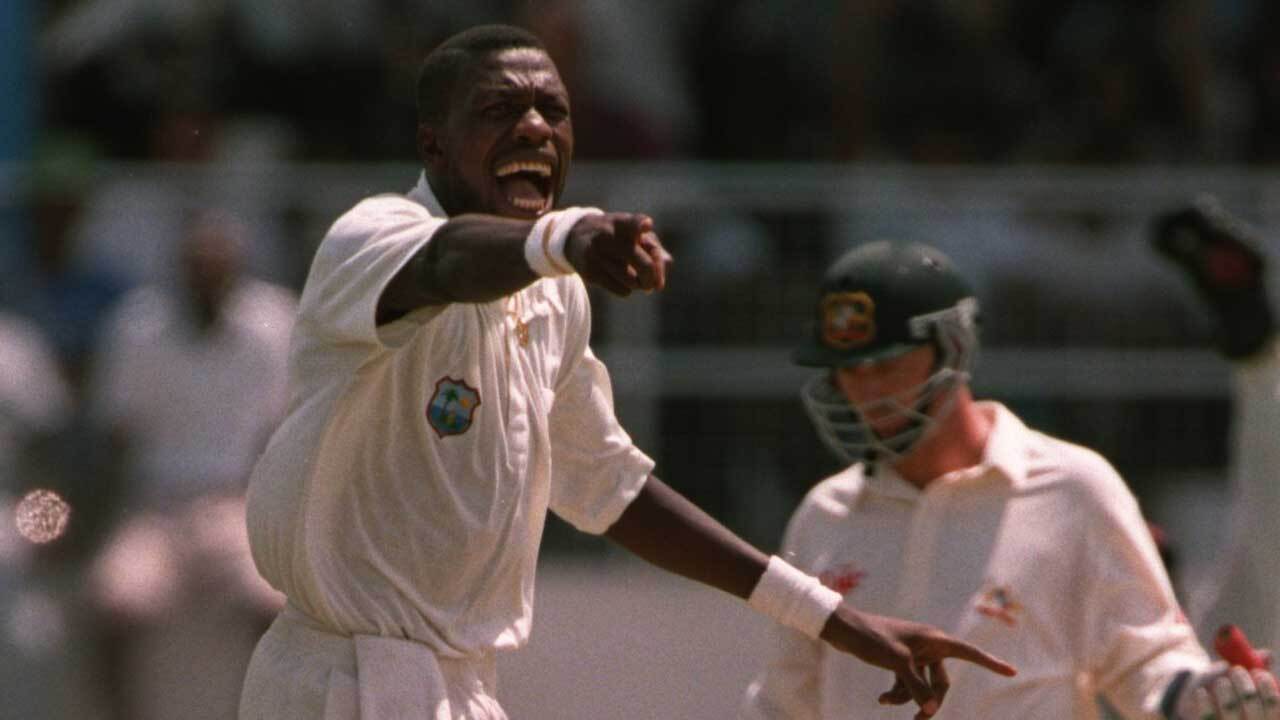
Ambrose Dominates Pakistan and Australia
Curtly Ambrose, a name synonymous with cricket mastery, made headlines in 1990. Against Pakistan, he grabbed 14 wickets with an impressive average of 17.07, drawing attention despite Ian Bishop’s standout performance.
Though he missed the final ODI, his best Test figures came when he clinched five for 35. The following year, as Australia visited, Ambrose shone again, securing 18 wickets across five Tests.
His prowess contributed significantly to the West Indies’ 2–1 victory, marking him as a reliable force in the team’s bowling arsenal.
Not just a bowler, Ambrose’s batting in critical partnerships showcased his all-round cricketing skills, peaking with a memorable half-century against Australia.
Ambrose’s England Encore
When England hosted the West Indies, Ambrose’s bowling took center stage. Leading the charge with 28 wickets, he troubled newcomers and veterans alike, especially Graeme Hick.
His precision and control made scoring a challenge for the English batsmen. Despite a fitness hiccup in the final Test, Ambrose’s impact was undeniable, with Scyld Berry highlighting his role as a key difference-maker in the drawn series.
Ambrose’s celebration of each wicket, likened to doves taking flight, became an iconic image of his cricketing spirit.
Triumph in the Face of Adversity: South Africa and Beyond
The 1991-92 season saw Ambrose leading the West Indies to victory against South Africa, marking a historic win under a new bouncer rule.
His lethal bowling, especially in the final innings, underscored his ability to decisively turn games around.
However, a subsequent knee injury slowed him down in England, affecting his performance for Northamptonshire.
Yet, Ambrose bounced back, showcasing his resilience and skill in the World Series Cup and against Pakistan, further cementing his reputation as a leading bowler.
Ambrose’s Mastery Against England Reaffirmed
Returning to the Caribbean, Ambrose quickly dispelled rumors of fatigue and retirement. His devastating bowling decimated England in Trinidad, securing a miraculous victory from the jaws of defeat.
This performance, one of his career’s highlights, underscored his unmatched ability to dominate the game.
Despite a rare moment of frustration in Barbados, Ambrose finished the series as the top bowler, a testament to his enduring skill and impact on the cricket world.
Curtly Ambrose: A Journey Through Peaks and Valleys
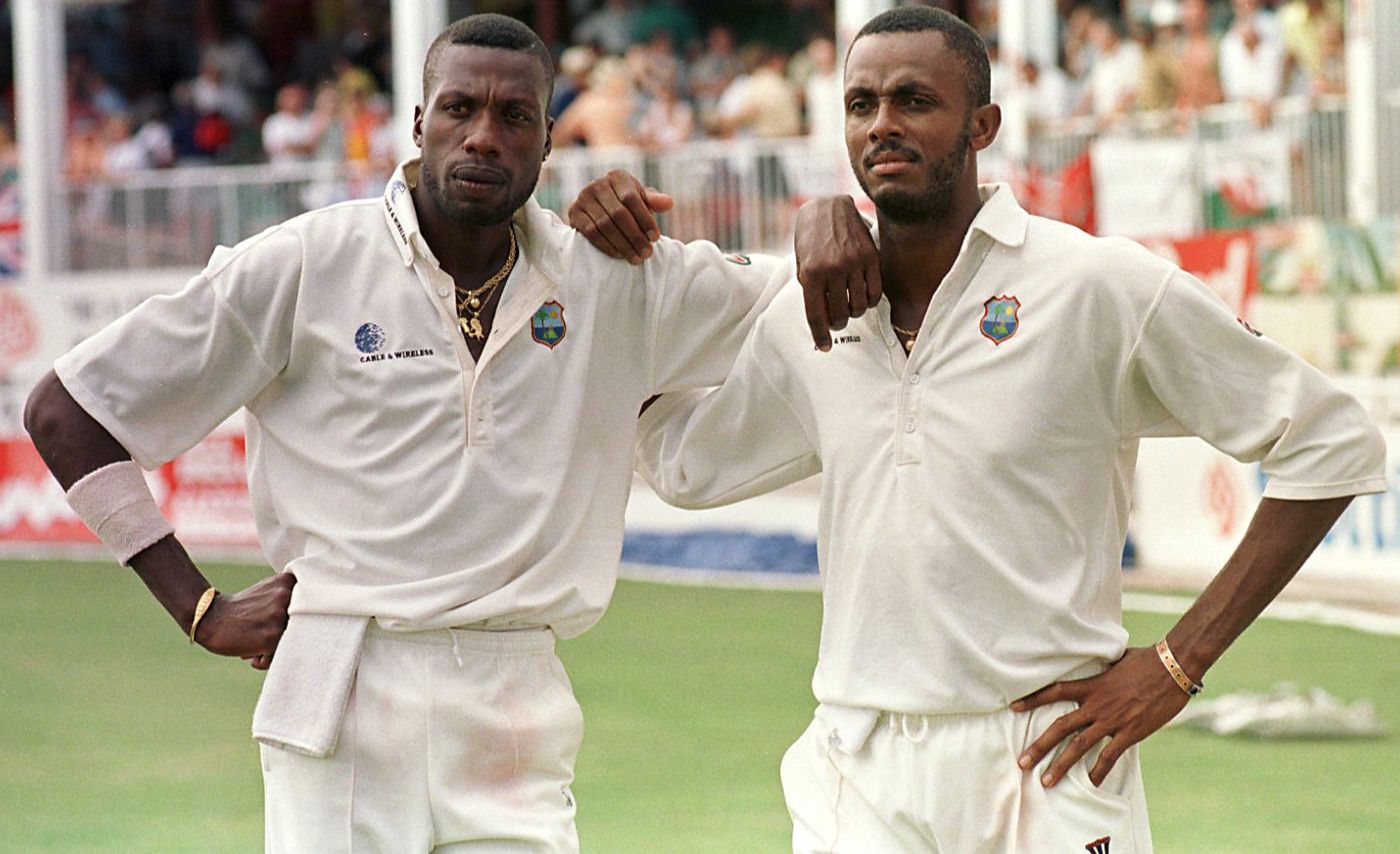
Curtly Ambrose’s shoulder woes began after intense bowling sessions, sidelining him for the end-of-year tour to India in 1994. Upon his return in New Zealand, 1995, his pace had notably slowed.
In the ODI series, he managed just one wicket, and the Test matches yielded five. Despite this, he played when Australia visited the Caribbean, where the West Indies faced their first Test series loss since 1980.
Ambrose, leading with 13 wickets at an average of 19.84, shone particularly in Trinidad by taking nine for 65. Yet, outside this remarkable performance, critics noted a decline in his speed and adaptability post-injury.
The Challenge Continues
The tour of England revealed further challenges. Ambrose didn’t claim any wickets in the ODI series, signaling a dip in confidence and form.
Though he found moments of brilliance in the Test series, injuries plagued him, forcing him to miss significant matches. Despite overshadowing by fellow bowlers, he showcased his skill in the final Test.
With 21 wickets, he ranked third in averages, yet issues with senior players’ attitudes cast shadows over the team’s dynamics.
A Resilient Return
After a brief rest, Ambrose returned to action in Australia, unaffected by team tensions. His performance, including a memorable man-of-the-match award, hinted at a comeback.
The World Cup saw the West Indies reaching the semi-finals, with Ambrose’s ten wickets at an average of 17.00 highlighting his crucial role. His success continued against New Zealand, leading in both ODI and Test series wickets.
A stint with Northamptonshire proved fruitful, though injuries led to his contract not being renewed, marking an end to a challenging phase with resilience and notable achievements.
Curtly Ambrose: A Tale of Resilience and Revival
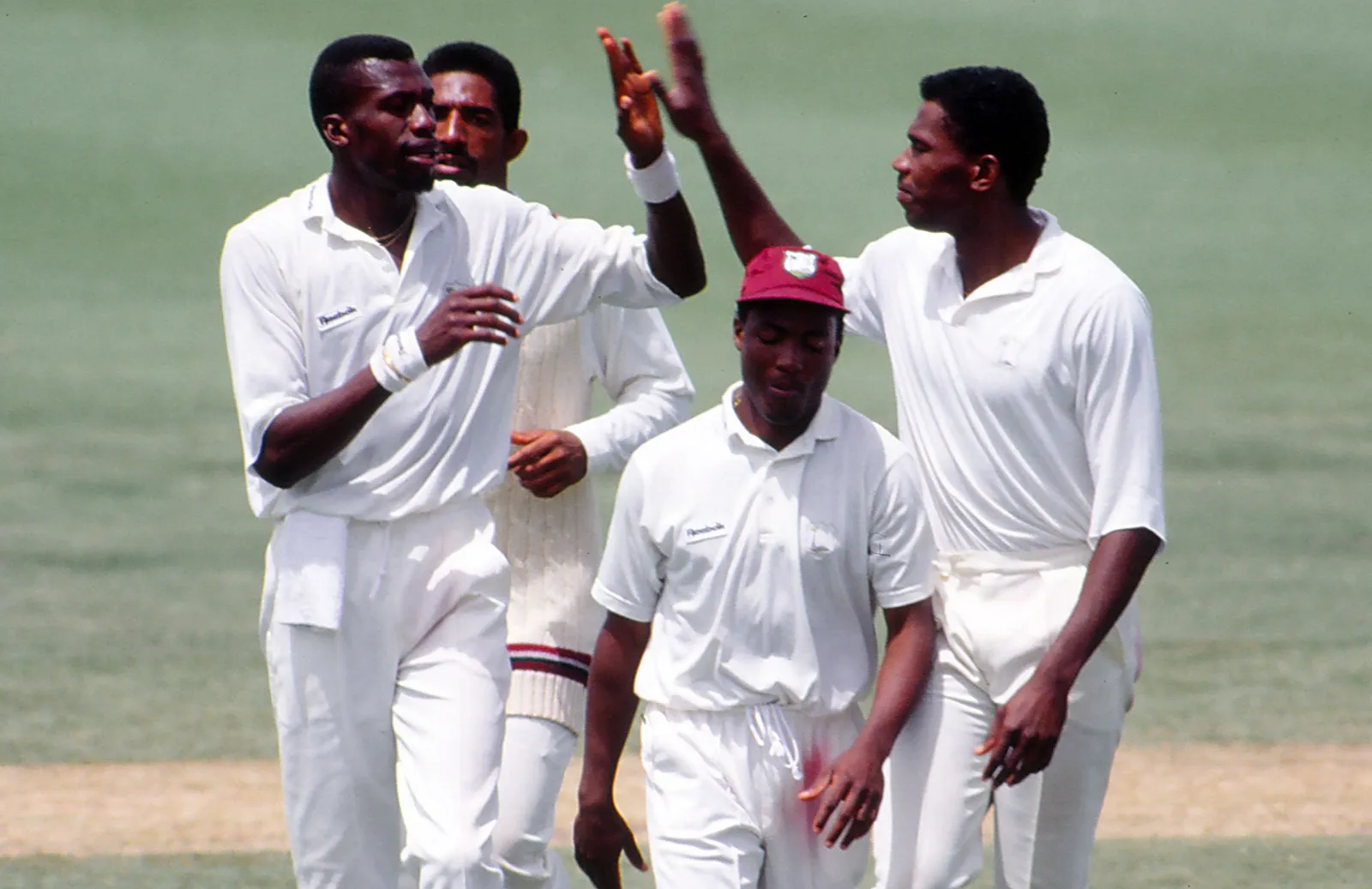
In 1996–97, the West Indies cricket team faced Australia, eager for victory. Curtly Ambrose, their star bowler, started the series with struggles, capturing only three wickets in the first two tests, both ending in defeats.
Critics doubted his effectiveness, pointing to a pattern of decline. Nevertheless, Ambrose boldly promised his teammates ten wickets in the third test.
Despite a hamstring issue, he nearly fulfilled that pledge, snagging nine wickets and securing the match for the West Indies.
This performance earned him the man of the match title, but an injury sidelined him for the fourth test. His absence was felt deeply as Australia clinched the series win.
Ambrose’s comeback in the final match saw him dominate again, with five wickets for 43 runs on a challenging pitch, leading to another West Indies win and man of the match for him.
His efforts topped the series’ bowling averages, underscoring his pivotal role in the team’s victories.
From Decline to Dominance
Later that season, despite Ambrose’s contributions, the West Indies faced challenges. Their performance dipped during tours of Pakistan and against teams like India and Sri Lanka.
Ambrose, while reaching personal milestones like his 300th Test wicket, saw his dominance questioned. Yet, the appointment of Brian Lara as captain sparked a revival.
Lara’s faith in veterans like Ambrose and Walsh infused new life into the team. Ambrose responded with spectacular performances against England in 1998, claiming 30 wickets at an astonishing average of 14.26.
His prowess dismantled the opposition, notably besting England captain Mike Atherton six times. Ambrose’s relentless energy and pace led the West Indies to a series victory, reminding everyone of his peak form and silencing critics who had written him off after the Pakistan tour.
Through highs and lows, Curtly Ambrose’s journey reflects a fighter’s spirit and an enduring legacy in cricket history.
Curtly Ambrose: The Final Years of Career
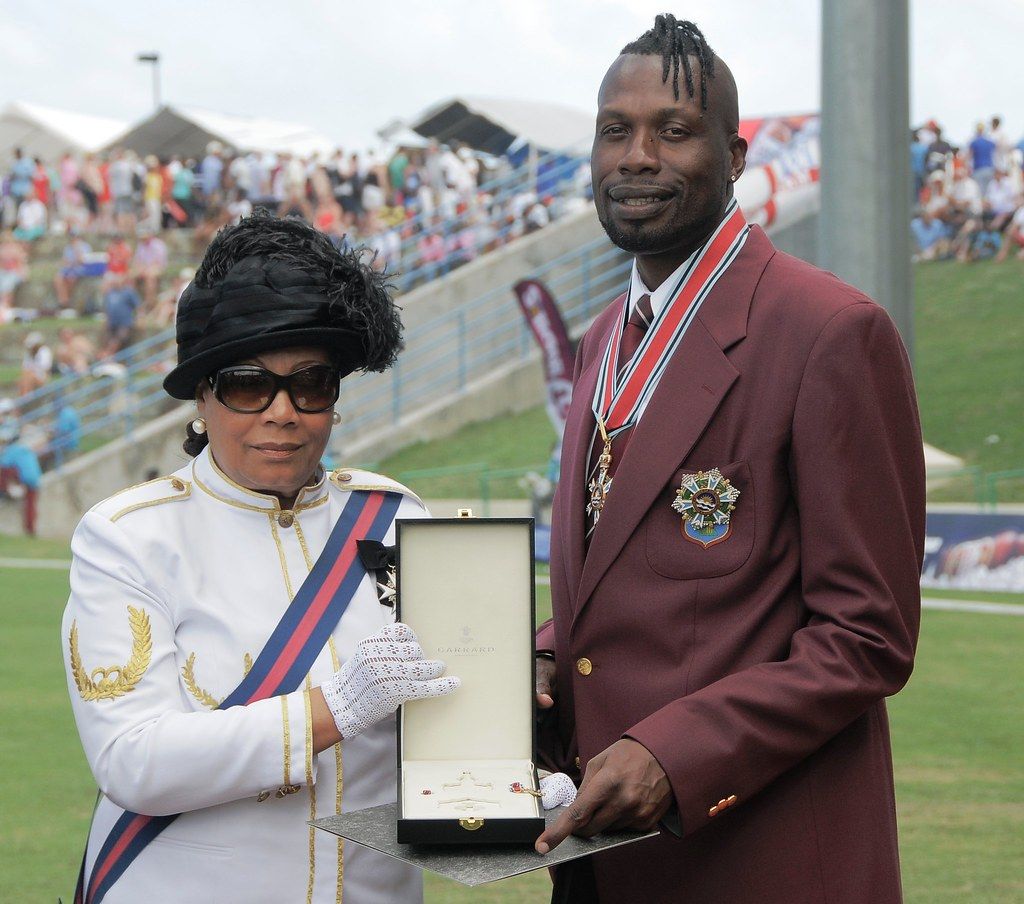
Curtly Ambrose missed a key tournament in 1998 after a hurricane damaged his house. Despite this setback, he returned with a bang to West Indies’ historic tour of South Africa.
Ambrose shone brightly, snagging 13 wickets at an impressive average, although the team faced a series of defeats.
In the opening match, his and Walsh’s efforts couldn’t mask the lack of support from their teammates. The duo faced a similar situation in the second Test, with Ambrose taking a remarkable eight wickets.
Unfortunately, he hit a rough patch in the following games, hampered by injuries and despite a heroic opening spell, South Africa piled on the runs.
Resurgence and Retirement
By 1999, West Indies squared off against Australia, defying expectations by drawing the series. Ambrose, ever the stalwart, claimed 19 wickets, including a memorable performance in the final Test.
His prowess continued in the World Cup, where he emerged as one of the most economical bowlers. Post-World Cup, the selectors decided to give him and Walsh a breather from some ODI tournaments.
Ambrose’s elbow injury sidelined him for a tour, but he bounced back in domestic cricket with stellar performances.
In his last ODI games, Ambrose’s magic on the field was evident, though he decided it was time to hang up his boots after a series in England.
Despite the series loss, Ambrose and Walsh were the silver linings, with Ambrose taking his final bow to a standing ovation and a guard of honour from the England players.
Encore: Life After Cricket
After retiring, Curtly Ambrose swapped his cricket bat for a bass guitar, channeling his passion into music with several bands.
Curtly Ambrose Takes the Helm: Bowling Coach for Jamaica Tallawahs, CPL 2022
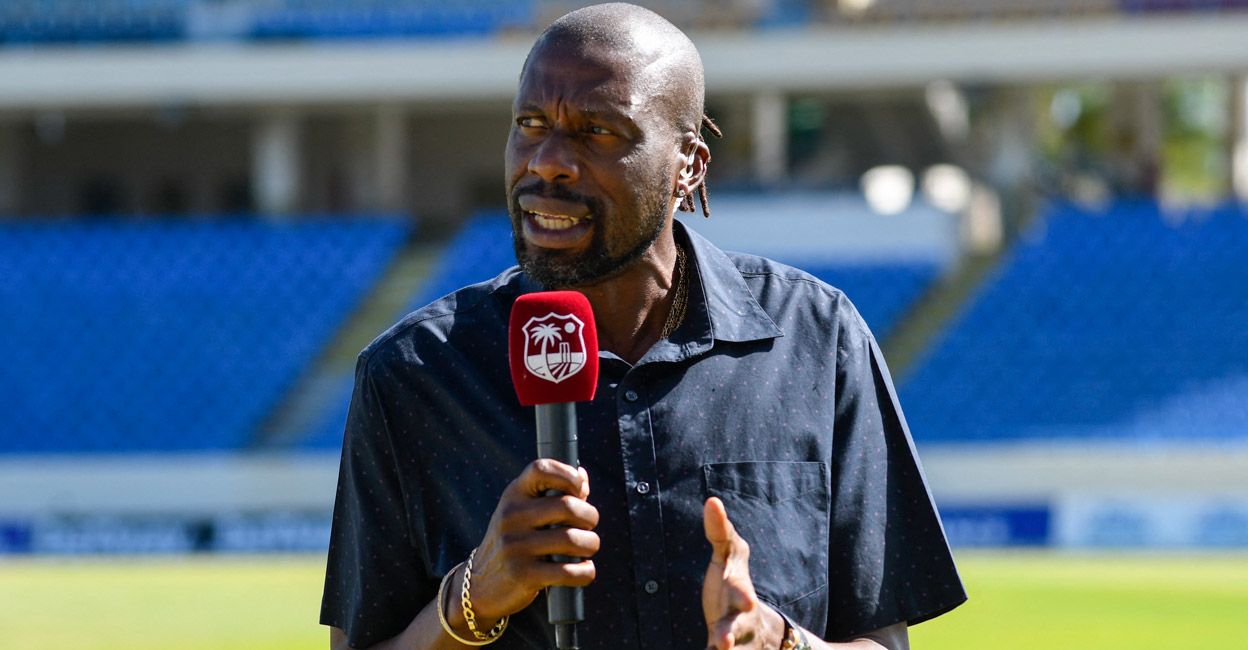
In a significant move for cricket, January 2022 saw Curtly Ambrose stepping up as the new bowling coach. His arena? The vibrant, competitive grounds of the CPL 2022, coaching the Jamaica Tallawahs.
This appointment marked a fresh chapter in Ambrose’s illustrious career, bringing his expertise and passion to the forefront.
As January dawned, so did a new era for the Jamaica Tallawahs. Curtly Ambrose, a name synonymous with cricketing excellence, embraced his role as bowling coach. His mission? To infuse the team with his winning strategies and indomitable spirit.
From the get-go, Ambrose’s influence was palpable. The Tallawahs, under his guidance, prepared to tackle the challenges of the CPL 2022.
His coaching style, a blend of rigorous discipline and innovative tactics, promised to elevate the team’s performance.
With Curtly Ambrose at the helm, the Jamaica Tallawahs embarked on their CPL 2022 journey, ready to conquer and impress.
The cricket world watched eagerly, anticipating the transformative impact of Ambrose’s coaching on the team’s fortunes.
In recognition of his cricketing legacy, the government knighted him, celebrating his contributions both on and off the field.
Frequently Asked Questions (FAQs)
What made Curtly Ambrose decide to pursue cricket over basketball?
Ambrose was initially inclined towards basketball but chose cricket after a significant growth spurt and encouragement from his mother. His late teens saw him grow to 6 feet 7 inches, making him a perfect candidate for fast bowling, a path he embraced fully under his mother’s guidance.
How did Curtly Ambrose become a cricket legend?
Ambrose’s journey to becoming a cricket legend began with his prowess as a fast bowler, identified during a softball cricket match. His performances for the St John’s cricket team and subsequently in first-class cricket for the Leeward Islands catapulted him into the international arena, where his exceptional skill set led to numerous victories for the West Indies.
What achievements highlight Curtly Ambrose's cricket career?
Several achievements highlight Ambrose’s career, including his debut where he claimed four wickets against Pakistan, a total of 405 Test wickets, and his role in leading the West Indies to several series victories. Notably, his 8 for 45 against England in the 1990s stands out as one of the finest bowling performances in cricket history.



